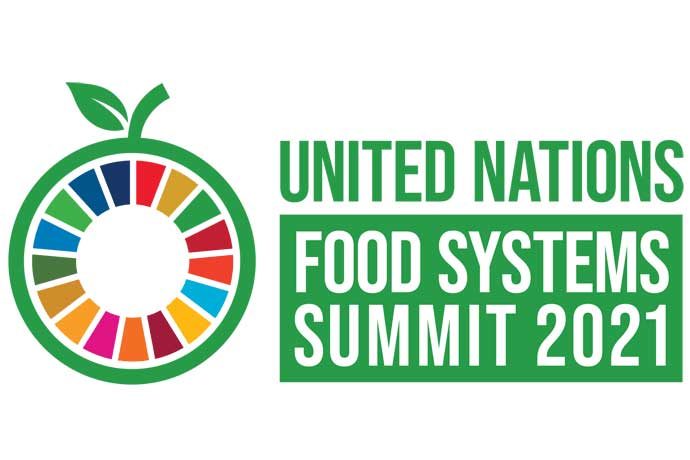NEW YORK — Secretary of Agriculture Tom Vilsack and other representatives of the US Department of Agriculture attending the United Nations Food Systems Summit in New York on Sept. 23 highlighted several steps the United States is taking to advance the goals of ending hunger and malnutrition and building more sustainable, resilient, and inclusive food systems, including making $5 billion in additional planned domestic investments toward those ends.
The UN Food Systems Summit was held at UN headquarters in New York during the annual opening of the General Assembly. It took place as world leaders were becoming increasingly alarmed about the increase in the number of the world’s hungry and undernourished during the COVID-19 pandemic. World hunger and undernutrition always have been chief concerns of the United Nations and its member states, but in the past several months, progress achieved over many years in decreasing the number of people facing hunger and the effects of undernutrition has been reversed. While there are several causes for the reversal, including armed conflict, natural disasters and the effects of climate change, the pandemic has loomed particularly large.
Partly due to the pandemic, the prevalence of undernourishment increased to around 9.9% of the world’s population in 2020 compared with 8.4% in 2019 with estimates of hungry people in 2020 reaching up to 811 million globally, according to the United Nations.
“As the pandemic physically pushed us apart, the preparations for this Summit brought us together,” said UN Secretary General Antonio Guterres. “Through national dialogues, governments gathered together businesses, communities and civil society to chart pathways for the future of food systems across 148 countries. Over 100,000 people came together to discuss and debate solutions — many of which are now being shared at this Summit.”
More than 90 heads of state and government submitted their national strategies and commitments on eliminating world hunger by 2030 at the Summit.
“Let’s learn from each other — and be inspired by one another — as we work together to achieve the Sustainable Development Goals,” Guterres said.
USDA representatives at the Summit said US efforts have been guided by a commitment to science-based, data-driven decision-making and innovative solutions, and the recognition that trade and well-functioning markets at the local, regional and international levels bolster food security and sustainable food systems.
“We must use the power of ingenuity to improve on food systems, so they provide safe, nutritious, affordable and accessible food for all, while conserving natural resources and combating the climate crisis,” Vilsack said.
The USDA described US participation and leadership in a number of multinational coalitions aimed at combating world hunger and malnutrition.
The United States assigned a high priority to expanding the Agriculture Innovation Mission for Climate, or AIM4C, which aims to significantly increase public and private investment in climate-smart agriculture and food systems innovation. The USDA said the number of countries supporting this global initiative has more than tripled since the United States and United Arab Emirates announced it at President Joe Biden’s Leaders’ Summit on Climate in April.
The USDA also announced the formation of the Coalition of Action on Sustainable Productivity Growth for Food Security and Resource Conservation. This global, multi-sector coalition aims to accelerate the transition to more sustainable food systems through agricultural productivity growth that optimizes the social, economic, and environmental dimensions of sustainability.
To help ensure that every child across the world has access to nutritious school meals by 2030, the USDA is leading US participation in the coalition on School Meals: Nutrition, Health and Education for Every Child, which supports comprehensive school feeding programs by advocating for multi-sector coordination, stable funding sources, and research to improve program quality and efficiency.
The United States, led by the USDA, also is supporting the global Food is Never Waste Coalition, and reaffirmed its commitment to reduce food loss and waste domestically.
The USDA said during the leadup to the UN Food Systems Summit it was host to three National Food Systems Dialogues on sustainable food systems. More than 200 US stakeholders took part, including farmers, food industry representatives, environmental groups, nutrition and food security advocates, unions and advocates for farm and food systems workers, and researchers.
Participants discussed challenges and opportunities for building more sustainable, resilient, and inclusive food systems in the United States.
The USDA told the Summit it is working to advance the priorities of food security and healthy diets for all, climate change mitigation and adaptation, and inclusive and equitable food systems through investments to “build back better” in the face of the climate crisis and economic disruptions from COVID-19.
The USDA said the United States plans to invest $5 billion from the American Rescue Plan and from pandemic assistance funds, of which $4 billion is to strengthen food systems through support for food production and improved processing, distribution, and market opportunities. The additional $1 billion will help bridge the gap from pandemic assistance to food systems transformation by supporting more efficient systems and infrastructure to ensure access to healthy diets for all.
The USDA also pointed to its initiatives to expand access to domestic emergency food assistance including extending additional Supplemental Nutrition Assistance Program (SNAP) benefits for food insecure households and increasing the availability of fresh foods through food banks and nonprofit organizations. The USDA said it also is modernizing SNAP benefits to better enable recipients to afford healthy foods and is investing in technological improvements to expand access to SNAP and facilitate online grocery purchases.


